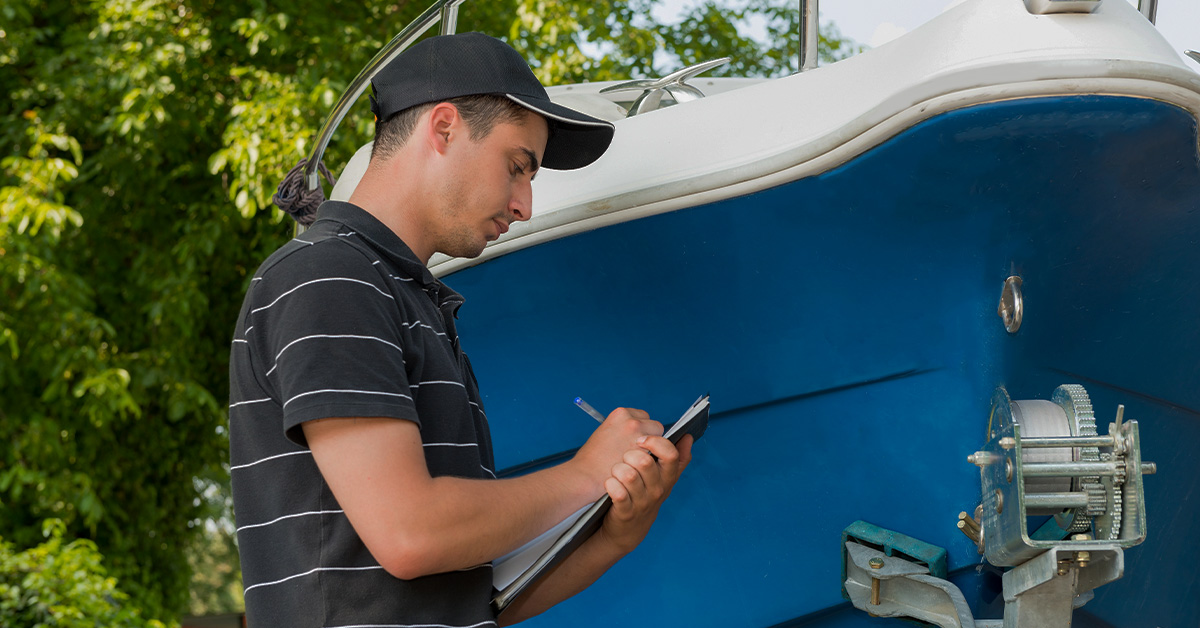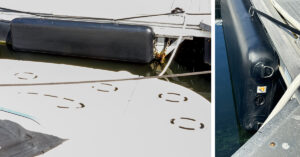As autumn arrives and cooler weather sets in, proper fall maintenance is crucial for protecting your boat, whether it’s being prepared for winter storage or staying in the water. A systematic approach to off-season preparation prevents costly damage and ensures your boat is ready for next season’s adventures. This comprehensive checklist covers essential maintenance tasks every boat owner should complete.
Engine Maintenance
Fuel System Protection
Add Fuel Stabilizer: Fill the tank completely and add marine-grade fuel stabilizer to prevent fuel degradation and gum formation during inactivity. Run the engine for several minutes to circulate the treated fuel.
Change Oil and Filter: Fresh oil prevents acid buildup that can damage engine components during storage. Replace the oil filter at the same time to ensure clean lubrication.
Fog the Engine: Apply fogging oil to protect internal engine components from corrosion. This step preserves bearings, cylinder walls, and other vital parts during extended storage
Cooling System Maintenance
Drain Freshwater Systems (for boats being stored out of water): Remove all water from the cooling system to prevent freeze damage. For closed-loop systems, ensure antifreeze concentration is adequate for temperature protection..
Flush Raw Water Systems: Flush saltwater and debris from raw water cooling systems. For boats that remain in the water in freezing climates, ensure proper winterization or complete a flush with antifreeze.
Electrical System Care
Battery Maintenance
Remove and Store Batteries: Disconnect and store batteries in a dry, temperature-controlled environment. Clean terminals and apply terminal protector to prevent corrosion. For boats staying in the water, ensure batteries are fully charged and consider a trickle charger when shore power is available.
Maintain Proper Charge: Keep batteries on a smart charger or trickle charger throughout winter to maintain optimal charge levels and extend battery life.
Check Electrical Connections: Inspect all electrical connections for corrosion or damage. Clean and protect them with dielectric grease.
Hull and Exterior Protection
Cleaning and Protection
Thorough Hull Cleaning: Wash the hull completely and remove salt, algae, and marine growth. Clean surfaces prevent staining and make spring preparation easier.
Apply Protective Wax: Wax all gel coat surfaces to shield against UV damage and environmental contaminants. Quality wax creates a protective barrier that preserves the finish.
Inspect for Damage: Look for stress cracks, chips, or other hull damage that could worsen during freeze-thaw cycles. Address minor repairs now to prevent major issues later.
Hardware and Fittings
Lubricate Moving Parts: Apply marine-grade lubricant to hinges, latches, and moving hardware. Lubrication prevents corrosion and ensures smooth operation next season.
Check Through-Hull Fittings: Inspect all fittings for proper operation and corrosion. Make sure seacocks operate smoothly and replace questionable components.
Interior and Safety Equipment
Interior Preparation
Remove Personal Items: Remove personal belongings, food, and perishables. Remaining items can attract pests or create moisture problems.
Clean and Dry Interior: Clean all interior surfaces and ensure complete drying to prevent mold and mildew.
Ventilation Setup: Leave hatches and compartments slightly open for airflow while still protecting against moisture. For boats remaining in the water, good ventilation is especially important.
Safety Equipment Maintenance
Inspect Life Jackets: Check for damage, proper flotation, and Coast Guard approval. Store in dry conditions.
Check Fire Extinguisher: Verify pressure and expiration dates. Replace or service as needed.
Test Electronics: Confirm proper operation of electronic equipment. Store portable electronics in climate-controlled conditions.
Fender and Docking Care
Marine Boat Fenders Protection
Inspect Marine Boat Fenders: Check for damage, proper inflation, and valve functionality. Winter storage is a good time to assess replacements.
Clean Fender Covers: Wash covers and inspect for wear or damage. Clean covers protect fenders and hull finishes.
Store Properly: Slightly deflate inflatable fenders to allow for temperature changes while maintaining shape. For boats staying in the water, ensure fenders are tied securely and positioned to protect the hull.
Final Preparations
Cover and Ventilation
Install Quality Cover (for stored boats): Use a fitted cover that allows ventilation and protects against moisture, debris, and UV rays. Ensure proper support to prevent pooling. For boats in the water, consider a cockpit or full cover while maintaining ventilation.
Moisture Control: Place moisture absorbers throughout the boat to control humidity, especially in enclosed spaces. Monitor and refresh as needed.
Documentation and Planning
Record Maintenance: Document all maintenance tasks and note items for spring attention. Maintenance records help with tracking and planning..
Schedule Spring Service: Arrange spring commissioning services early to ensure availability.
Completing this comprehensive fall maintenance checklist protects your investment and ensures a trouble-free return to the water next season, whether the boat is stored or kept in the water. Quality preparation now prevents costly repairs later and maximizes enjoyment when boating season resumes.









